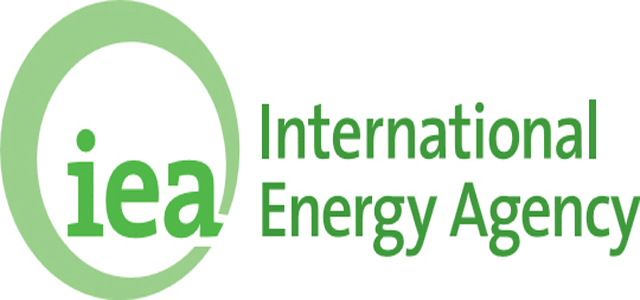Part 1 of 2 Parts
I like to say that nuclear power is the most complex and dangerous way to boil water ever invented by the human race. I also like to say that, in the end, it will be economics and public opinion that brings an end to the global use of nuclear power to provide a great deal of the electricity consumed by the nations of the world. Now a long time nuclear industry advocate appears to agree with me, at least with respect to economic issues.
Nobuo Tanaca is the former head of the International Energy Agency (IAEA). The IEA is “Paris-based autonomous intergovernmental organization established in the framework of the Organization for Economic Co-operation and Development (OECD) in 1974 in the wake of the 1973 oil crisis.” While originally aimed at responding to physical disruptions of the global oil supply, the mandate for the IEA has expanded to include energy security, economic development and environmental protection.
Tanaka says that new nuclear power plants are ridiculously expensive and uncompetitive compared to solar power. Bloomberg says that the U.S. nuclear power plants are “bleeding cash” and the Brattle Group published an analysis on July 19th which said that it would cost at least five billion dollars a year to save existing nuclear power plants.
Proposals have been brought forward in the U.S. Congress to put a price on carbon pollution which would make nuclear power more competitive. Conservatives in Congress have opposed every such proposal. A 2009 proposal for carbon cap-and-trade climate change mitigation passed in the House but was defeated by conservatives in the Senate. A rising price on carbon dioxide emissions would certainly improve the competitiveness of carbon-free nuclear power against natural gas, one of its major competitors. Studies show that a twenty dollar a ton carbon tax could preserve the nuclear industry in the U.S.
Proponents of nuclear power as a major solution to mitigating climate change have criticized environmentalists as blocking progress in saving nuclear power. However, as I have often said, economics will kill nuclear power, not environmentalism.
An analysis released last November from Lazard Ltd. pointed out that in many regions, building and operating new renewable energy installations is cheaper that just operating a nuclear power plant. A May New Energy Finance report from Bloomberg concluded that twenty four out of sixty six U.S. nuclear power plants are either scheduled to be shut down or will probably fail to turn profit by 2021.
It should be obvious that if existing nuclear power plants are so uncompetitive, building and financing an entire fleet of new nuclear power plants would be too expensive to even consider. Two nuclear power reactors that were being built in South Carolina have been abandoned after nine billion dollars had been spent partly due to rising costs and schedule slippage. It was originally estimated that it would cost eleven and a half billion dollars to build the two reactors. When the project was cancelled, the estimated cost had rising to twenty-five billion dollars, more than twice the original cost.
Please read Part 2
Blog
-

Nuclear Reactors 597 – Nuclear Power Is Too Expensive – Part 1 of 2 Parts
-

Geiger Readings for Jul 30, 2018
Ambient office = 116 nanosieverts per hour
Ambient outside = 79 nanosieverts per hour
Soil exposed to rain water = 78 nanosieverts per hour
Beefsteak tomato from Central Market = 171 nanosieverts per hour
Tap water = 102 nanosieverts per hour
Filter water = 94 nanosieverts per hour
-

Geiger Readings for Jul 29, 2018
Ambient office = 116 nanosieverts per hour
Ambient outside = 79 nanosieverts per hour
Soil exposed to rain water = 78 nanosieverts per hour
Avocado from Central Market = 171 nanosieverts per hour
Tap water = 102 nanosieverts per hour
Filter water = 94 nanosieverts per hour
-

Geiger Readings for Jul 28, 2018
Ambient office = 116 nanosieverts per hour
Ambient outside = 79 nanosieverts per hour
Soil exposed to rain water = 78 nanosieverts per hour
White onion from Central Market = 171 nanosieverts per hour
Tap water = 102 nanosieverts per hour
Filter water = 94 nanosieverts per hour
Dover sole – Caught in USA = 89 nanosieverts per hour
-

Radioactive Waste 344 – US Radiopharmaceuticals Ordered To Decommission Two Plants In Denton, Texas By August 2019
Trace Life Sciences (TLS) owned and operated two plants in Denton, Texas where medical radioisotopes were manufactured for diagnosing disease and treating cancer. When the financial backers of the company went into receivership, TLS closed the Denton plants in 2009.
A linear accelerator was purchased by TLS to use in the manufacture of medical radioisotopes. The accelerator was originally built for the failed Superconductor Super Collider project by the Los Alamos National Laboratory. It currently resides in an underground concrete tunnel. To date, inspectors who visit the Denton facilities regularly have found no signs of outside radiation. It will be most expensive part of the facilities to clean up.
NuView Life Sciences (NLS) pulled the Denton plants out of receivership and created US Radiopharmaceuticals (USR), a wholly owned subsidiary of NuView, in an attempt to reopen the Denton facilities and begin manufacturing medical radioisotopes again.
USR formally applied to the Texas Department of State Health Services (TDSHS) for a new manufacturing license for the Denton facilities in 2012. Investors were sought to support reopening the facility. The new license application that was filed by USR included a requirement that USR have sufficient funds to clean up the radioactive waste when the plants was closed permanently. Special insurance is also available to satisfy the licensing requirements for covering the cost of cleanup. To date, USR has not been able to obtain sufficient investment to reopen the Denton facility.
While USR has been searching for investors, the state of Texas has allowed USR to store low-level radioactive waste in drums at the Denton plants. The equipment used to make the radioisotopes is also radioactive but has been deemed to pose no threat to the surround area for the time being.
There was a special hearing held in February where a state administrative judge, USR and state health officials estimated that it would cost from two million to two and a half million dollars to clear up the radioactive waste that is stored at the Denton facilities.
On July 16th, the TDSHS instructed USR to decommission its two plants in Denton and clean up the radioactive waste stored at the two plants by August of 2019. If they fail to meet that deadline, the job will have to be done by the state health official with the cost being born by the taxpayers.
Texas does have a special fund for the clean up of low-level radioactive waste. Last year, the fund contained about twenty-seven million dollars. A new audit of the fund will be completed by the Texas comptroller’s office this August. The TDSHS is authorized by Texas state law to attempt to recover the cost of the cleanup from USR, if they fail to meet the deadline for cleaning up the site.
Medical radioisotopes are critical for some diagnostic and therapeutic procedures. Recently there have been global shortages of important medical radioisotopes and countries and companies have been scrambling to find new ways to manufacture medical isotopes and open new facilities to meet the global demand for medical radioisotopes. Unfortunately, the Denton facilities will not be participating in this radiopharmaceuticals renaissance. -

Geiger Readings for Jul 27, 2018
Ambient office = 116 nanosieverts per hour
Ambient outside = 79 nanosieverts per hour
Soil exposed to rain water = 78 nanosieverts per hour
Crimini mushroom from Central Market = 171 nanosieverts per hour
Tap water = 102 nanosieverts per hour
Filter water = 94 nanosieverts per hour
